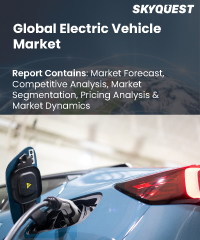
Product ID: SQMIG25C2046

Report ID:
SQMIG25C2046 |
Region:
Global |
Published Date: February, 2024
Pages:
211
|
Tables:
143 |
Figures:
83
Electric Vehicle Market Driver
Growing Government Subsidies, Favourable Policies and decreasing reliance on fossil fuels are expected to drive the Market
Electric Vehicle Market Restraint
High manufacturing cost for EVs and Batteries likely to stymie the market growth
Our industry expert will work with you to provide you with customized data in a short amount of time.
REQUEST FREE CUSTOMIZATIONWant to customize this report? This report can be personalized according to your needs. Our analysts and industry experts will work directly with you to understand your requirements and provide you with customized data in a short amount of time. We offer $1000 worth of FREE customization at the time of purchase.

Product ID: SQMIG25C2046